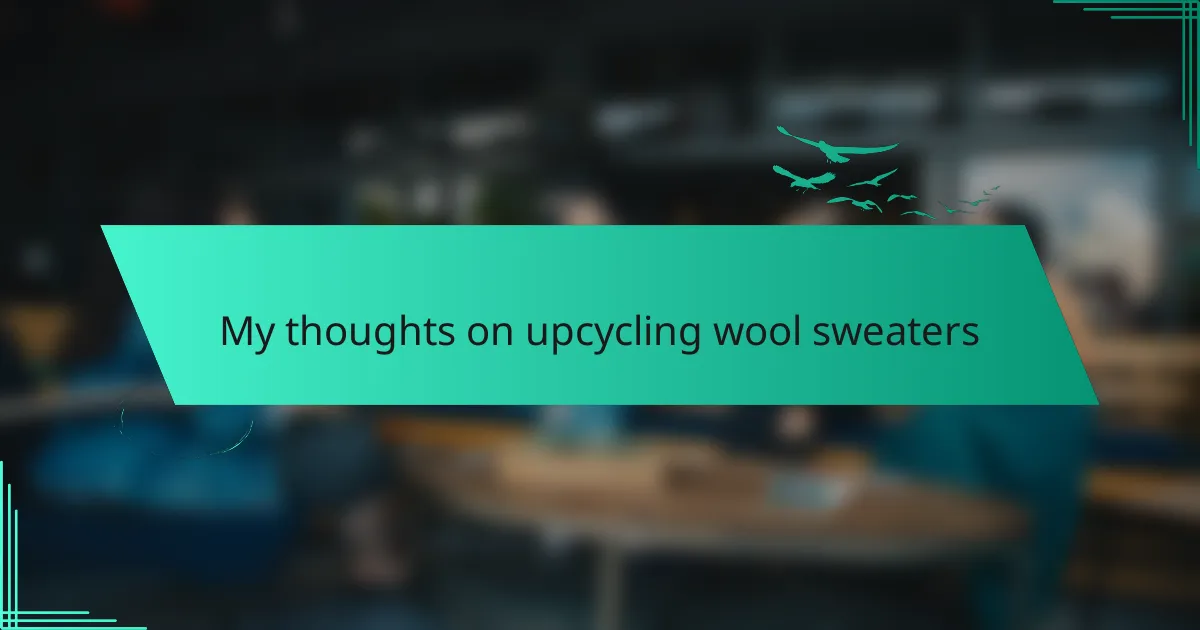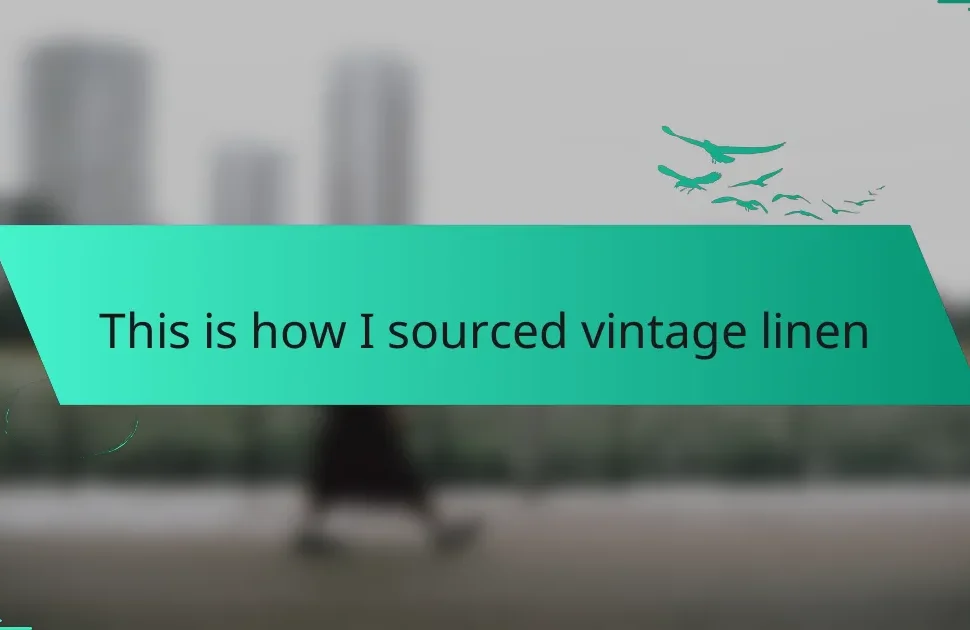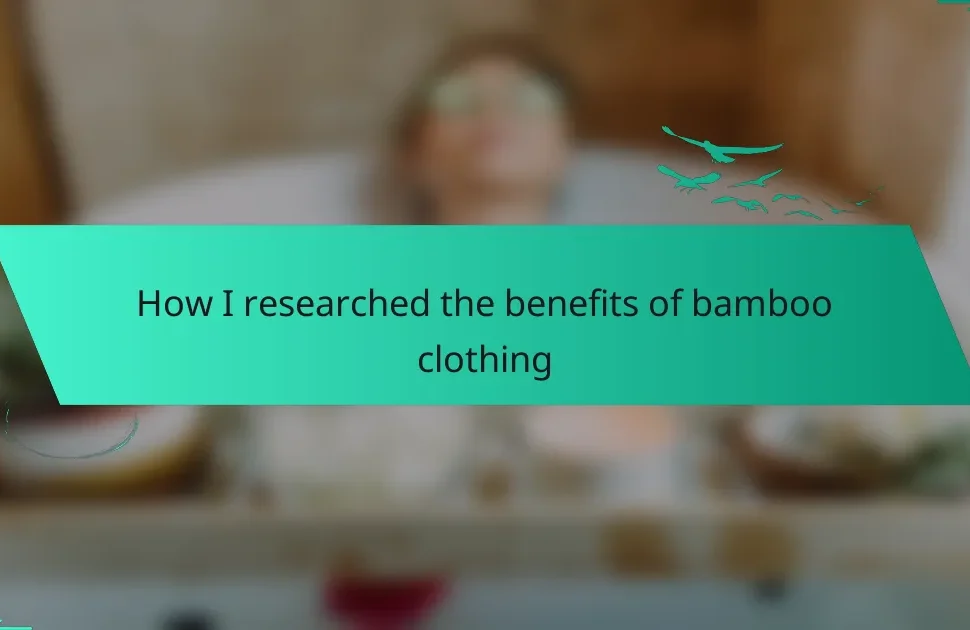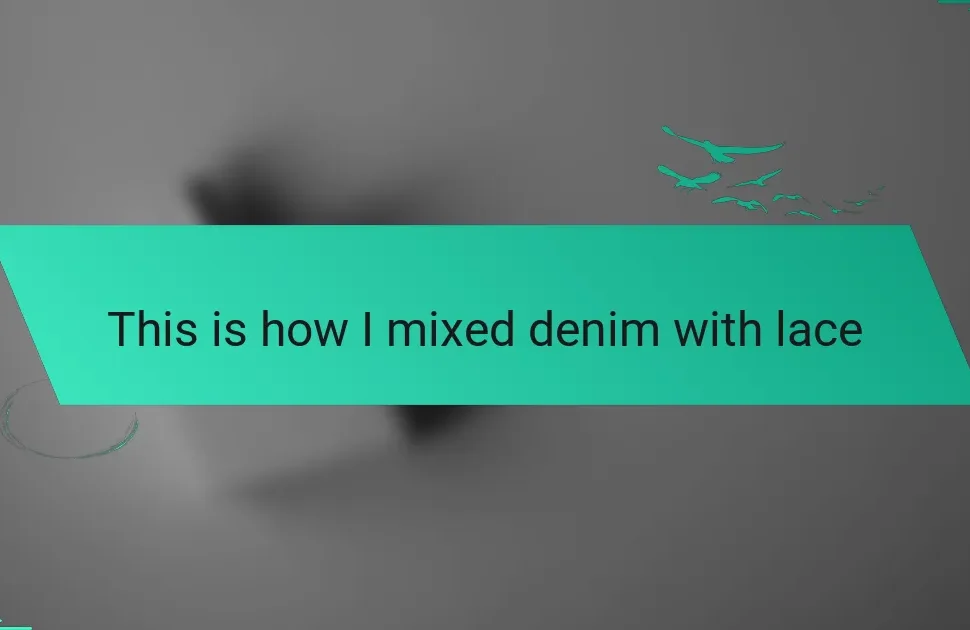Key takeaways
- Upcycling sweaters creatively transforms old garments into unique, functional items, reducing waste and promoting sustainability.
- Benefits of upcycling include environmental impact, cost savings, personal connection to the items being repurposed, and skill enhancement.
- Popular techniques for upcycling involve repurposing materials into accessories, patchwork creations, and felting for durability.
- Choosing quality wool and considering garment condition, color, and pattern are crucial for successful upcycling projects.
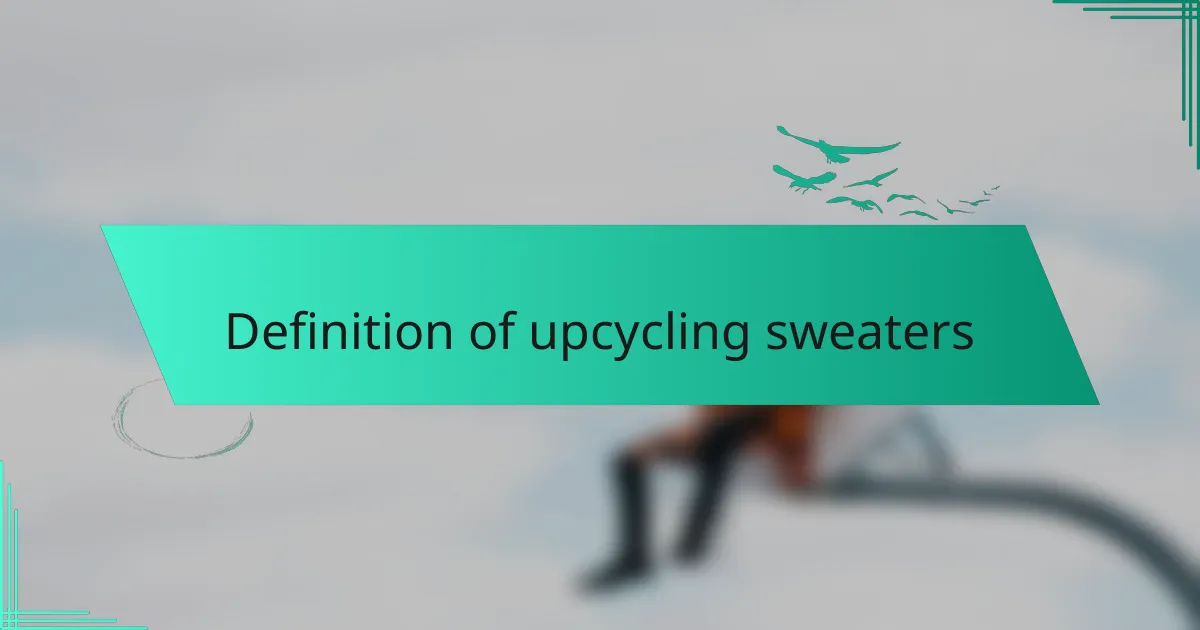
Definition of upcycling sweaters
Upcycling sweaters involves transforming old or unwanted wool sweaters into new, functional items. This approach not only reduces waste but also gives you the chance to express your creativity. I’ve found that turning a favorite yet worn-out sweater into a cozy pillow cover or a stylish tote bag can be incredibly rewarding.
When I first tried upcycling a wool sweater, I felt a mixture of excitement and hesitation. The thought of cutting into something I once cherished was daunting. However, seeing the end result—a beautiful, one-of-a-kind piece—made it all worthwhile.
Here’s a quick comparison of traditional recycling versus upcycling wool sweaters:
| Aspect | Traditional Recycling | Upcycling |
|---|---|---|
| Purpose | Process of breaking down materials | Transforming items into new products |
| Outcome | New materials for reuse | Unique, functional items |
| Emotional Connection | Less personal investment | Creative expression and nostalgia |
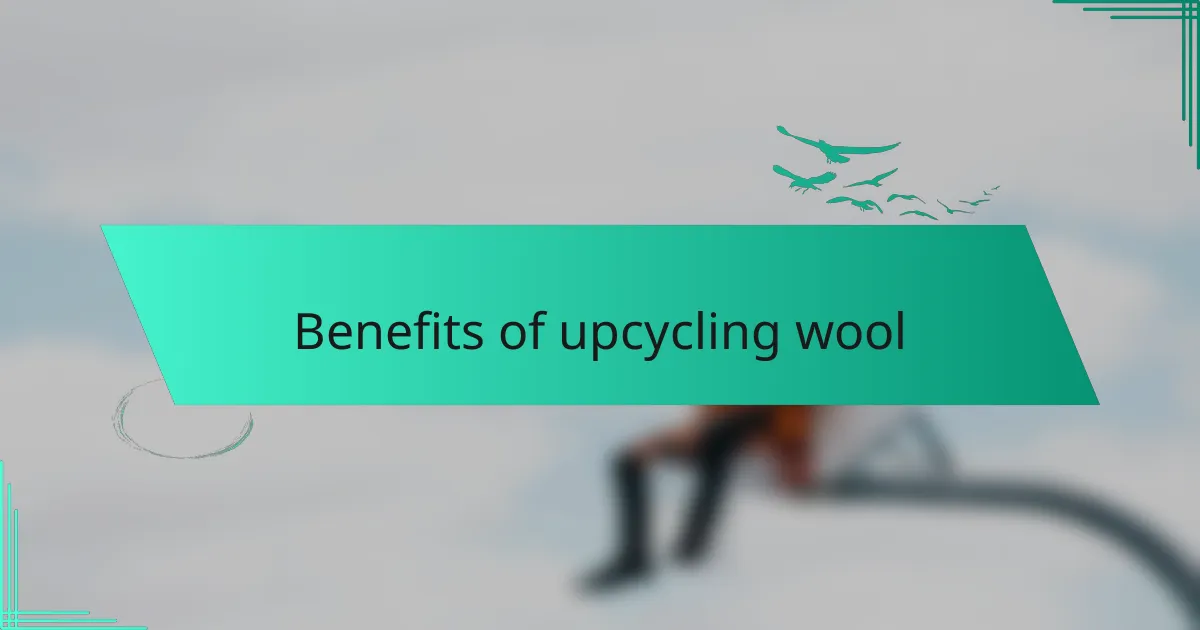
Benefits of upcycling wool
Upcycling wool sweaters is not only a satisfying creative outlet but also an excellent way to contribute to sustainable fashion. When I transform an old sweater into something new—like a cozy throw pillow or a warm pair of mittens—I experience a sense of accomplishment. It feels great knowing I’m giving new life to something that might have otherwise ended up in a landfill.
Beyond the joy of crafting, there are several tangible benefits to upcycling wool:
- Environmental Impact: Upcycling reduces waste and minimizes the demand for new materials, which can be energy-intensive to produce.
- Cost Savings: Rather than buying new clothing or home decor, upcycling lets you utilize what you already have, saving money in the process.
- Unique Creations: Each upcycled piece has its own story and character, ensuring your fashion or home items stand out from mass-produced alternatives.
- Personal Connection: Working with a beloved old sweater can evoke nostalgia, turning it into something functional while keeping memories alive.
- Enhancing Skills: Each project improves your sewing and crafting abilities, allowing you to explore new techniques with every piece.
By embracing upcycling, I not only connect with the past but also actively participate in shaping a more sustainable future.

Popular techniques for upcycling
One popular technique I’ve enjoyed is repurposing sweaters into stylish accessories like headbands or scarves. It’s fascinating how a little creativity can breathe new life into an old garment. The process often feels like a journey—it begins with a simple idea, and then I find myself cutting and sewing, savoring each moment as the project unfolds.
Another favorite is the art of patchwork. This technique allows me to combine different sweater pieces, creating a warm, vibrant quilt or a unique bag. I remember the first time I stitched together various colors and patterns; it was like piecing together memories from different moments in my life. It’s a wonderful reminder that every scrap holds a story worth sharing.
Lastly, felting stands out as a unique approach. By washing wool sweaters in hot water, I can create a thicker, more durable fabric that’s perfect for crafting bags or home decor items. The transformation is remarkable—what began as a worn garment evolves into something sturdy and usable. Have you ever experienced that moment of change? It’s truly satisfying to see the metamorphosis!

Tools needed for sweater upcycling
When I dive into upcycling wool sweaters, having the right tools by my side makes all the difference. I always keep a quality pair of scissors handy; they glide through the wool much easier than regular ones. And, believe me, a good seam ripper is essential for carefully deconstructing old sweaters while preserving the usable fabric.
Additionally, I find that a needle and thread in natural fibers, like cotton, works best for reassembling pieces. There’s something satisfying about stitching by hand, connecting threads while creating something new. A measuring tape is also crucial; it helps ensure that everything fits just as I envision it.
Here’s a quick comparison table of essential tools for sweater upcycling:
| Tool | Purpose |
|---|---|
| Scissors | Cutting through wool easily |
| Seam Ripper | Deconstructing sweaters |
| Needle and Thread | Stitching and assembly |
| Measuring Tape | Ensuring proper measurements |

My favorite upcycled sweater projects
One of my favorite upcycled sweater projects is transforming an old sweater into a cozy pair of mittens. I remember the first time I did this; it felt magical to bring warmth back to something I had worn so often. As I cut and sewed, I could almost hear the fabric whisper stories of chilly days long past, making each stitch even more meaningful.
I also love creating chunky headbands from felted sweater pieces. There’s something incredibly satisfying about taking a bulky knit and crafting it into something fashionable. The thrill comes when I see the headband fit perfectly, reminding me of the original sweater while adding a fresh twist. I often find myself asking, “Could this really come from that old thing?” The answer is a resounding yes!
Another project that stands out is making patchwork pillows from several sweaters. I vividly recall piecing together different colors—each hue sparking a memory associated with the original sweater. The result was not only a visual delight but also a cozy reminder of times gone by. Every time I see that pillow on my couch, I can’t help but smile at the history stitched into it. Isn’t it amazing how repurposing can bring memories and comfort back into our lives?

Tips for choosing the right wool
Choosing the right wool for upcycling can make all the difference in your project. I always look for 100% wool sweaters when I’m hunting for materials. They felt wonderfully when washed and have a variety of textures, which ultimately enhances any upcycled piece. It’s like a treasure hunt to find a hidden gem amongst the racks—what will you uncover?
I usually pay attention to the garment’s condition. Sweaters with minimal pilling and intact seams are ideal. I recall one time finding a beautiful vintage sweater with intricate patterns, but those pesky little pills made it tricky. Sometimes, it’s better to leave behind an imperfect piece for something that sparks joy and imagination.
Lastly, don’t underestimate the importance of color and pattern. I often ask myself, “Will this vibrant hue work in my vision?” Mixing different textures and colors can lead to stunning results. One of my favorite projects involved combining several vibrant shades to create a patchwork blanket—each stitch felt like weaving together a vibrant story. What hues resonate with you? Seek those out; they’ll breathe life into your creations!
